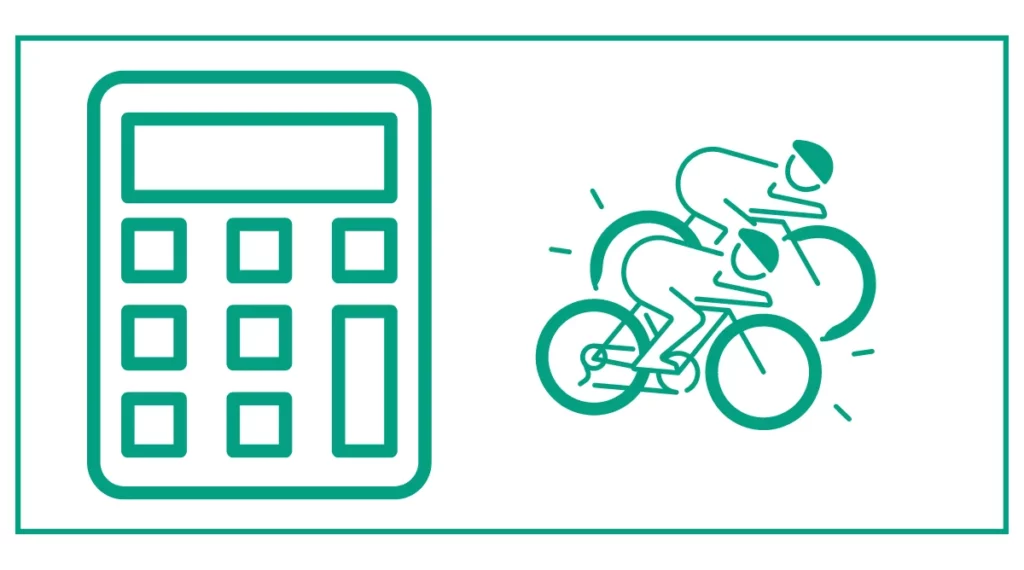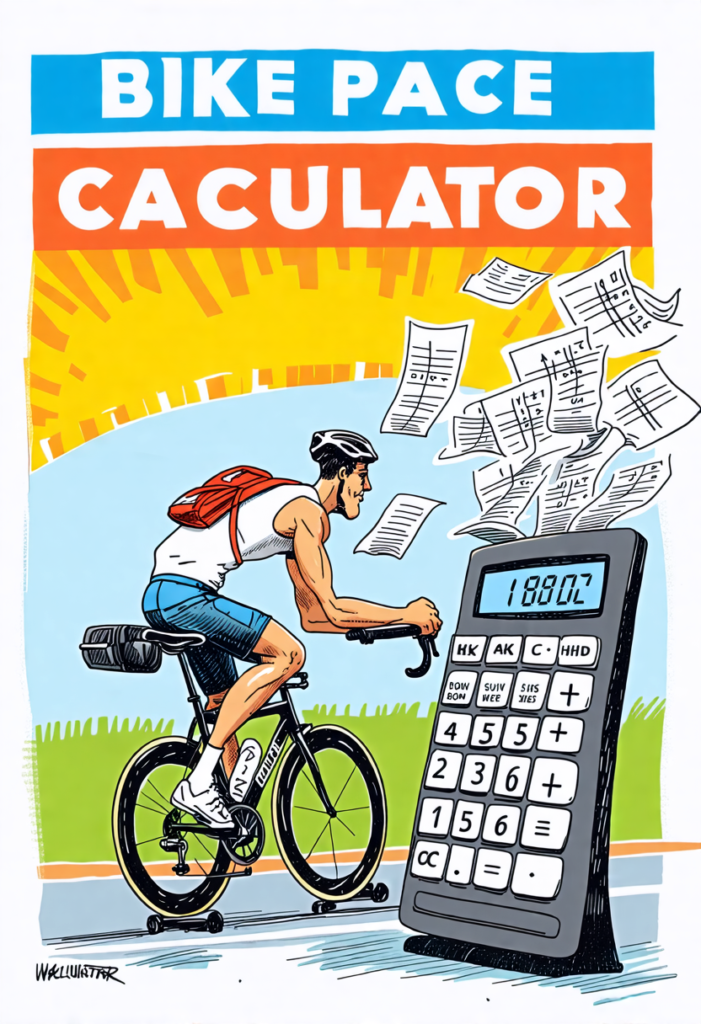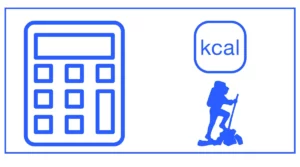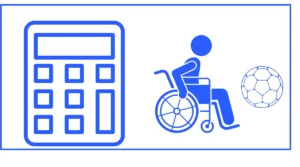Bike Pace Calculator
The Bike pace calculator helps you calculate the bike pace in minutes per kilometer and speed in kilometers per hour.
Cycling or riding pace is the time needed to finish a bike distance. It also shows your cycling speed. It is also known as cycling speed.
Enter the total distance covered, hours, minutes, and seconds. Hit the calculate button to find out the bike pace.
The formula to calculate bike pace is:
Bike pace = Time spent / Distance covered

You might be interested in calculating dunk or burpee calories.
Understanding Bike Speed and Pace
Speed
Speed is the rate at which you cover a certain distance over time. In cycling, speed is typically measured in kilometers per hour (km/h) or miles per hour (mph). For example, if you ride 30 kilometers in one hour, your average speed is 30 km/h.
Pace
Pace, on the other hand, represents the time it takes to cover a specific distance. In cycling, pace is often expressed as minutes per kilometer (min/km) or minutes per mile (min/mile). For instance, if you cycle 1 kilometer in 2 minutes, your pace is 2 min/km.
Understanding both speed and pace is crucial for cyclists, as they provide different perspectives on your performance. Speed gives you a broader view of your overall progress, while pace helps you maintain a consistent effort throughout your ride.
How do I use the bike speed and pace calculator?
Our bike speed and pace calculator is designed to be user-friendly and intuitive. Here’s a step-by-step guide on how to use this handy tool:
- Enter your cycling distance in the “Distance” field. You can input this in kilometers or miles, depending on your preference.
- Input your cycling time in the respective fields for hours, minutes, and seconds.
- Click the “Calculate” button.
- The calculator will instantly display your pace (in min/km or min/mile) and speed (in km/h or mph).
It’s that simple! With just a few clicks, you can gain valuable insights into your cycling performance.
Features and Benefits of the Calculator
Calculate Speed from Time and Distance
One of the primary functions of this calculator is to compute your average speed based on the time and distance you’ve ridden. This feature is particularly useful for:
- Analyzing your performance after a ride
- Comparing your speeds across different routes or days
- Setting realistic goals for future rides
For example, if you’ve completed a 40-kilometer ride in 1 hour and 30 minutes, the calculator will show that your average speed was 26.67 km/h.
Determine Pace for Consistent Performance
Understanding your pace can help you maintain a steady effort throughout your ride, which is crucial for endurance cycling. The pace calculator feature allows you to:
- Plan your energy expenditure for long rides
- Maintain a consistent speed during races or time trials
- Compare your performance across different segments of your ride
For instance, if you’re aiming to complete a 100-kilometer ride in 4 hours, the calculator will show that you need to maintain a pace of 2 minutes and 24 seconds per kilometer.
Estimate Time for a Given Distance
Planning a long-distance ride or participating in a cycling event? The calculator can help you estimate the time you’ll need to complete a specific distance based on your average speed. This feature is invaluable for:
- Setting realistic arrival times for your destination
- Planning rest stops and refueling points during long rides
- Estimating finish times for races or events
Let’s say you’re planning to ride 80 kilometers and you know you can maintain an average speed of 25 km/h. The calculator will show that you’ll need approximately 3 hours and 12 minutes to complete the ride.
Convert Between Units
Our calculator also offers the convenience of converting between metric and imperial units. You can easily switch between:
- Kilometers and miles for distance
- Kilometers per hour and miles per hour for speed
- Minutes per kilometer and minutes per mile for pace
This feature is particularly useful for cyclists who use different unit systems or participate in international events.
Applications of the Bike Speed and Pace Calculator
Training and Performance Improvement
For cyclists looking to enhance their performance, this calculator is an invaluable tool. You can use it to:
- Set specific speed or pace targets for your training sessions
- Track your progress over time by comparing your speeds on the same route
- Analyze your performance in different conditions (e.g., headwind vs. tailwind, flat terrain vs. hilly routes)
Race Preparation
If you’re gearing up for a cycling race or event, the calculator can help you:
- Estimate your finish time based on your average speed
- Determine the pace you need to maintain to achieve your goal time
- Plan your race strategy by breaking down the course into segments and calculating the required speed for each
Route Planning
For long-distance cyclists and bike tourers, the calculator is a crucial tool for route planning.
- Estimate travel times between destinations
- Plan daily distances based on your average speed and available riding time
- Calculate arrival times to ensure you reach your accommodation before dark
Triathlon Training
The bike speed calculator is also beneficial for triathletes, who need to balance their performance across swimming, cycling, and running.
- Calculate your bike split times for different race distances
- Determine the optimal cycling pace to conserve energy for the run segment
- Compare your cycling performance with your swim and run paces
Factors Affecting Cycling Speed and Pace
While the calculator provides accurate calculations based on the input data, it’s important to remember that various factors can influence your actual cycling speed and pace:
- Terrain: Flat roads generally allow for faster speeds compared to hilly or mountainous routes.
- Wind conditions: Headwinds can significantly slow you down, while tailwinds can boost your speed.
- Bike type and condition: A well-maintained road bike will typically be faster than a mountain bike on paved roads.
- Rider’s fitness level: Your physical condition, endurance, and power output play crucial roles in determining your speed and pace.
- Traffic and road conditions: Stop signs, traffic lights, and poor road surfaces can affect your overall average speed.
- Weather: Rain, extreme temperatures, or high humidity can impact your performance.
- Gear selection: Proper use of your bike’s gears can help you maintain an optimal cadence and speed.
Keep these factors in mind when using the calculator to set realistic goals and analyze your performance accurately.
Tips for Improving Your Cycling Speed and Pace
Now that you’re familiar with the bike speed and pace calculator, here are some tips to help you improve your cycling performance:
- Consistent training: Regular rides will help build your endurance and power, leading to improved speeds over time.
- Interval training: Incorporate high-intensity intervals into your rides to boost your overall speed and power output.
- Proper bike fit: Ensure your bike is correctly sized and adjusted for optimal comfort and efficiency.
- Aerodynamics: Work on your riding position to reduce wind resistance and increase your speed.
- Nutrition and hydration: Fuel your body properly before and during rides to maintain energy levels and performance.
- Gear maintenance: Keep your bike in top condition with regular maintenance to ensure smooth and efficient rides.
- Group rides: Riding with others can help you learn new techniques and push your limits safely.






